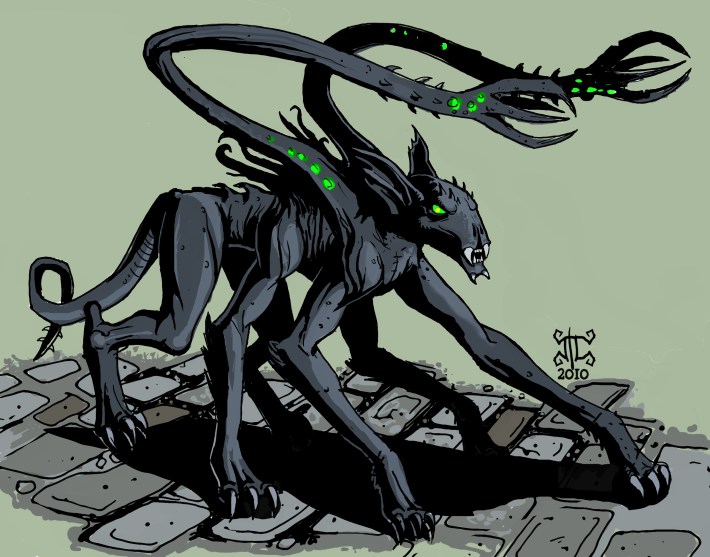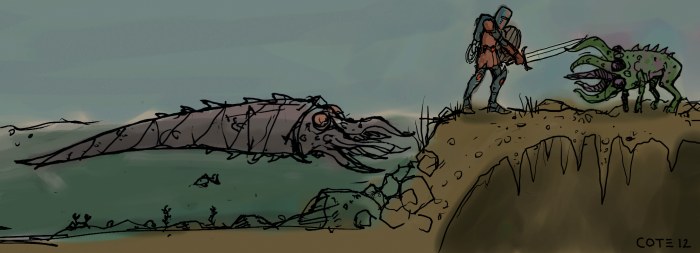
| ||||||||||||||||||||||||||||||||||||||||||||||||||||||||||||||||||||
Description
Vaguely feline in appearance, baleful destroyers are deadly six-legged predators with fiendish intellects that belie their bestial appearance. Their shimmering hide ranges from indigo to purplish black and two vicious, claw-tipped tentacles sprout from the shoulders. These claws make fearsome weapons, but are also suprisingly dextrous, allowing for manipulation of weapons, tools and traps as needed.
A network of tendrils on the ears and back send and receive electromagnetic vibrations, allowing them to communicate telepathically and subtly manipulate thoughts. They have a voracious appetite and subsist on the raw chemical compounds (primarily phosphorous) derived from the bodies of their prey.
Combat & Tactics
Baleful destroyers are stealthy, vicious apex predators. They will use intellect to outwit and intimidate potential victims, but tend to revert to a bestial state when severe hunger sets in (20% chance when encountered in the wild). When in a bestial state, the Deceptive Suggestion ability is replaced with a simple telepathic broadcast of the creature's murderous intent.
Notes
Feel free to use baleful destroyers as straightforward combat-centric beasts, but they also have potential to be surprisingly intelligent and clever foes. Their mild innate telepathy allows them to coordinate attacks when not encountered individually. The telepathic ability also allows them to appear to be where they are not, making them harder to hit.
